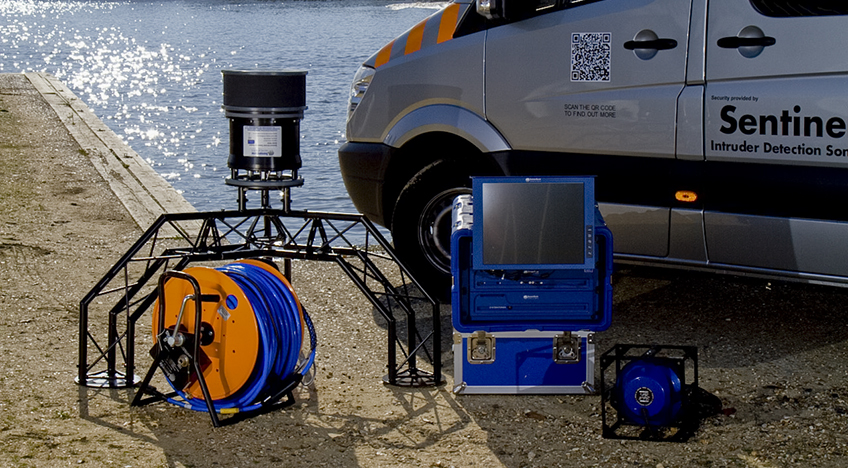Sonardyne Sentinel: Closing The Gap In Underwater Situational Awareness

By: Rhonda Moniz
Due to their strategic and economic importance, critical national infrastructure (CNI) such as nuclear power plants, dams, LNG terminals, and offshore oil platforms represent attractive targets for sabotage. While these CNI installations have stringent above-the-water security measures, including physical barriers, access control, radar, and long-range opto-electrical sensors, they are not generally equipped to detect intrusions from below the water. That’s why constant, real-time underwater monitoring using a diver detection sonar (DDS) can help ensure a facility is fully protected.
However, the reliable detection of underwater threats and the discrimination from marine flora and fauna is a notoriously difficult challenge to overcome. Any intruder detection system must work—and work reliably—in the most challenging acoustic environments where large vessels come and go, where depth sounders may be continually active, and where relatively still water creates a complex thermal structure. In addition to the environmental factors that increase the difficulty of detection, once a target has been detected, it must also be classified.
Few commercially available DDS systems can lay claim to overcoming these hurdles, but one that can is Sentinel from subsea technology company Sonardyne Inc., Houston. It’s now 10 years since the company, perhaps best known for its acoustic positioning and inertial navigation systems, entered the maritime security market with Sentinel—a DDS designed from the outset to be quick to deploy, easy to use, and outperform all other, mainly military- derived technologies.
Performance, Coverage, and Protection
Sentinel detects, tracks, and classifies divers and autonomous underwater vehicles (AUVs) approaching a protected asset from any direction and alerts security personnel to the threat. With the ability to identify underwater vehicles at ranges of up to 1,200 m and divers up to 900 m, Sentinel takes reliable, long-range underwater intruder detection to a new level and, since its introduction, has established itself as the most widely deployed system of its type on the market.
An ongoing development program has ensured that Sentinel has kept pace with users’ needs and, today, three variants are available. The base system is configured to meet the needs of commercial and infrastructure facility protection projects. It can be used as a standalone security sensor or integrated with third-party C2 (Command and Control) security systems. Support for networked sonars is also offered, meaning that entire waterfronts can be protected from a single operator station.
Sentinel RD (Rapid Deployment) is the expeditionary variant configured for Portable Diver Detection Sonar (PDDS) duties. Its small topside footprint means it is perfect for short-term operations using offshore patrol vessels (OPVs) and temporary sites on shore. Sentinel XF (Extended Features) is a military-only variant not available to private or commercial users.

Sentinel detects, tracks and classifies divers and autonomous underwater vehicles (AUVs) approaching a protected asset from any direction and alerts security personnel to the threat.
Sentinel’s compact size and lightweight design make it a practical solution for force protection in support of military ships visiting overseas ports as well as homeland expeditionary roles securing naval bases and ports of embarkation/ debarkation. It was recognized early on that security personnel using Sentinel would not be sonar experts, so all the complexity was engineered into software that remains easy-to-use. In fact, once it’s set up, the system can be left to run autonomously.
It’s essential that any alarm system does not cause unnecessary workload by falsely reporting the presence of an intruder. Continuous false alarms can also lead to operator fatigue, whereby alarms are mostly ignored knowing that each time it will probably be false. Sentinel’s advanced algorithms can intelligently and reliably discriminate a real threat from fauna and flora, eliminating false alarms. This means security personnel are free to monitor other critical systems, safe in the knowledge that Sentinel is keeping watch.

